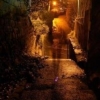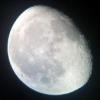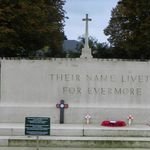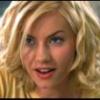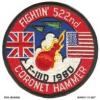Search the Community
Showing results for tags 'Revell'.
-
F/A-18C Hornet Swiss Air Force 1:48 Revell The F/A-18 Hornet was developed by McDonnell Douglas and Northrop from Northrop's YF-17 prototype in the 1970's for use by the US Navy and marine Corps as a carrier capable multirole fighter jet. Northrop's YF-17 was initially a design for the US Air Force and McDonnell Douglas were brought in to make it carrier capable following their success with the F-4 Phantom. In the late 1980's Switzerland after evaluation decided the F/A-18 was the aircraft to equip its Air Force. The aircraft was designed for carrier operations so it was felt a good fit for operations from short runways with steep takeoffs. The aircraft were to be built locally at Emmen. Due mainly to cost implications and some noise abatement problems the Swiss Air Force only works office hours. The Kit On opening the box you are greeted by Monograms old F-18 kit. The fuselage including the wings are split top & bottom with 3 additional parts trees. Construction starts with the cockpit. A basic 4 part NACES ejection seat is constructed and added to the cockpit tub along with an instrument panel, control stick and engine controls. A pilot figure is provided if you wish to use him. Once complete the cockpit is installed in the top fuselage half. The fuselage halves can then be joined together making sure the tail plane parts and the engine parts are installed first. The two tail planes are joined and the instructions indicate glue is not to be used in order that they can move. Following this the nose is added and the intake parts on both sides. Next the vertical tails are added along with an arrestor hook, airbrake, and various antennas. The landing gear and gear doors are then added. Due to the design of the landing gear it does contain quite a few parts and these will need to be carefully assembled to get the aircraft to sit right. Finally the pylons can be added. Sidewinders are supplied for the wing tip rails if you want to use them. However the aircraft regularly fly completely clean or with just a centre line fuel tank. The outer pylons should not be used as these are not correct for Swiss aircraft. Decals The decals are the star of this re-release. The design is by Daco Products of Belgium and they are printed in Italy for Revell. The modeller is given two choices of markings from the Swiss Air Force. It should also be noted that the IFF antenna on the nose, and the ID light on the left nose as used by the Swiss Air Force are not included in the model and will have to be sourced by the modeller. 18 Staffel "Panthers". 17 Staffel "Falcons". Conclusion The kit is fairly old now and this shows in the tooling. However the alternatives can be expensive. This kit is a cost effective way to add a Swiss F/A-18 to your collection, with a little work required. Revell model kits are available from all good toy and model retailers. For further information visit or
-
Hello So first post...and my god I feel so happy with this. So I've always loved the V-Force. Cliche I know, but I do love them. I already have a Valiant and Vulcan at home (both Airfix kits). I got a Victor a few years back too, the Matchbox one. I got it complete on eBay for the stellar price of £8 and P&P. Bargin. I haven't realy started it...ok I did but the paintwork is awful and when I get my airbrush/compressor set I'll do some practice models and move onto it. So here's the pretty box...(please don't judge my need-copious-amounts-of-cleaning carpet) So I haven't really explored my local area before...and I said to my partner after work one day I wanted to see a few shops. I know we have a web based store here that lets you purchase from it's warehouse directly but I wanted to see a more traditional one like I'm used to in Swindon - you know the sort, walls of models and too much choice? So as I said I had one Victor already. Well there was one sat there in the second hand section. I grabbed it and checked it was complete - one thing missing off the sprue but rolling around in the box. I couldn't resist - I've seen these sell for £50 on eBay now and it was only £30...so I got it. I had to. So I now have 2 Victors...and maybe 2 Vulcan kits soon too. Somebody help me xD Also, isn't that artwork just glorious?
-
Here is another of my current obsessions with Tiger Meet aircraft. It is the Revell 1/72 “Black Panther” Tornado from the 2011 Tigermeet. Now why they call it Black Panther is beyond me as the scheme on the plane is clearly that of a tiger. Prior to this I had only built Revell’s 1/144 Tigermeet kits. Those went together quite well. This one was no exception. The fit of the parts, their design, can’t say enough about them. The fit of the decals and the design of them also are top notch. The instructions to put the decals on, not so hot. You really need to go over the decals, the position drawings in the instructions and figure out where to start with them and which decals go down first. If you don’t then bad things will happen. And the build instructions should very precisely say “Hey, quit building this kit right here; paint it and put the decals on! Do not put the pylons on the bottom of the aircraft and do not attach the various nobs and bits that protrude on the airframe.” Unless you are a 5 level decal master of the universe, adept at cutting, splicing and piecing decals, you need a clean upper and lower surface to make this decal scheme work. I had to remove all of the pylons on the underside after I had attached them to make this scheme work. Removing them was a tad harder than gluing them on. Especially since I had done all of the paint work prior to removal. Other than this one gripe, I would recommend this kit in a heartbeat. Here are the results: I took the last picture to show what the scheme looked like wings extended. NATO meets Picasso. So, the only thing left is to build is a stand for this. I am open to ideas as my corny one is a tiger paw base with the jet suspended by acrylic tubes from the jet exhausts. Also, do you think anyone will notice there are no pilots flying the bird? Maybe a really fancy drone?
-
While I wait for paint to dry on my 2 1/32 projects (Revell Zero and ZM Raiden), in keeping with my new fascination with Tiger Meet aircraft and similarly decorated ones, I found the 1/72 Revell Tornado Black Panther kit lying around my local hobby shop. (Stung by my addiction as I just went in to get a tin of Humbrol paint) Couldn’t resist it, the price was very reasonable and it looked so pretty on the shelf. So, this is my next fun project. I have no clue about the specifics of the Tornado other than the 2 1/144 Revell Tiger Meet models I have done. With that said, be warned, the colors may be a bit off on some things, artistic license will be taken on other items as my main focus will be on the overall paint scheme. So, obligatory box art shot. I start the cockpit build with the seats. And after assembly, a bit of paint, some weathering and imaginative representations of seat belts, this is what I came up with. Now I put the seats on top of a dime for a sense of scale. However, Hendie in another post of mine reminded me I'm using a dime in Britmodeller so he gave this little gem of size for me to follow: "Now if you had said the dime is Ø75mm, or Ø0.075m, or Ø75000µm, or even the width of a large mans pinkie fingernail, then it might have made some degree of sense, and BMer's would have some inkling of the scale and the problems you have faced and stoically overcome... but dime? No!" The instrument panels were next and painted with a base coat of Humbrol Sea Gray I think. They are shown here with the decals for each. Will the decals react kindly to Micro Sol and follow the raised outlines? Here they are after application and their first application of Micro Sol. And this is the result after a few applications of Micro Sol, some blending of decals and paint and a bit of drybrushing. Finally, the installation of the control stick in the rear IP panel completes the set. The rear bulkhead gets its base color. And a bit of detailing and drybrushing. I doubt much of it will be seen, but who knows. The cockpit tub is prepared next and receives its base color with the instrument side panels picked out in glossy black. I then add a bit of artistic color to liven things up a bit, along with some drybrushing and paint detailing with an itty bitty brush and magnifying visor. The front IP panel is put in along with the joystick. And then the rear IP panel, both seats and the rear bulkhead. Work then begins on the radio equipment (I think it is radio equipment, anyway it is electronic stuff that fits in between the front seat and the rear IP panel. It receives a base coat of NATO black and then is drybrushed with metallic silver. Inserted between the front fuselage halves. I still need to do a bit of cleanup on some of the seams and where the radio equipment and rear IP panel meet. But, that is all for right now. Comments always welcome.
- 34 replies
-
- 3
-

-
- Black Panther
- 1/72
-
(and 2 more)
Tagged with:
-
Hi, I am taking part in the F-14 Tomcat II Single Type Group Build and Less Than A Tenner Group Build with my newly acquired Revell 1/144 F-14A Black Tomcat kit. I have setup a poll to see which of the 2 schemes the kit includes decals for is the most popular among the members here to help me make my decision. Here are pictures of the 2 schemes : Vandy One: VF-142 Ghostriders : I cannot work out if the Ghostriders scheme looks too busy or if I like the fact that the Vandy One scheme is so different because its black. May the best scheme win the poll :-) Rick
-
Hello, This one has been on the drawing board since completing the Airfix Version back in January, hopefully I'll not have as many problems with this one as I am currently having with the "Mustang/Tornado/Gannet", so should be moving fairly quickly. I'm going to be doing this in the scheme of AJ-G which was flown by Wing Commander Guy Gibson VC DSO* DFC*, and using Humbrol 29 Dark Earth & Tamiya TS-2/XF=61 for the Dark Green sections, the black underside & engine block will be finished in Plastikote Flat Black. Box and Sprue Shot's: Not had a chance to take any photo's but I've now sprayed the Flat black area's on the aircraft, as the kit was rather Glossy: Thanks for Looking
-
Thought I'd already started a post. Bit along the way now. I've made the odd error and for the most part enjoyed it. I have decided for the most part that a lot of exterior photoetch isn't for me. I don't have steady enough hands to apply them (little antenna things etc) on the odd occasion I was tempted to drop kick the lot into the River Wear. However I persevered. The plane: currently has no seats thanks to the poor instructions which meant I ended up cutting bits I shouldn't, as they helpfully don't show the seats from the front, just angled pictures of the back and sides! Some stores The two holes you can see are for 2mm x 1mm magnets. Only the ASRAAMS won't have them, allows me to switch things up a bit. The plane has had two coats of pledge on the top, need to get the underside done, decal and weather! While I wait for it to dry I'll finish off my Apache and look at making a proper start on my supacat jackal.
-
Hello all, I started this build as a quick and easy thing to pass the time while I wait for paint/stuff to dry on either the Mustangs or the F-15. I thought it would be a quick build, how wrong was I?? Where I am after two hours work on/off. Was trying to make the name plate look like it was written in weathered stone. Was only testing my drybrushing tho. I decided to close the undercarriage as well as I thought it looked silly otherwise. Im not planning on seeing the bottom anyhow so I am not bothered if it's not perfect. Thanks for looking! Kind Regards, Dazz
-
Hi folks,calling this one finished,Wonderful kit to build only a return to 1/72 scale after I started it last April has delayed it,s finish. Biggest blunder was the green tinting on the upper cockpit windows should be blue. Apologies to ardent Lynx fans no doubt there are a lot of "bits and bobs" I,ve missed.thanks for looking.
-
As the paint schemes for the Enterprise E and the Voyager are very similar, I will be working on both projects at the same time. The ship is fully assembled and ready for hull painting to begin. The display stand is painted in a mix of Revell aqua colour Silver and Tamiya acrylic Gold. Progress photos to follow.
-
Messerschmitt Me109 G-10 Revell 1:32 The history of the Me-109 is written large all over the web and also included in the earlier review of the Revell Me109G-6 release, HERE, so I won’t go repeating it. As it is, its relevant to post the differences between the two aircraft as far as I can ascertain. In the Reich Luft Ministerium (RLM) vision, the G6 was designed to be the last version of the Gustav to be ever produced. Consequently, as early as 1943, Messerschmitt started working on an improved 109, the K. The K was essentially a refined G6 with emphasis on improving the aerodynamics, flight controls and cockpit ergonomics. There was no engine limitation and as with the G, a wide selection of versions powered with the DB605A & D families were forecast. Implementation differed from design, however, and in the spring 1944, the G6 was still the only 109 mass produced. It had evolved a bit from the first G6 produced, having seen the following changes: • Erla Haube • Glass head armour • DB605AS • DB605AM • Tall metal tail & Rudder • Tall wood tail & Rudder • Tall tail wheel • MW-50 Water-methanol over boost • MK108 axial canon Most of the above became standard as production continued. Because of these delays and other new high performance fighters entering mass production (Ta152, Fw190D, Me262), the conversion of all existing factory lines to the K production was meaningless. Having developed the type for some time, Messerschmitt was however allowed to switch from the G6 to the K4 as soon as possible. Sometime during June 44, a new interim version of the G was planned. It was supposed to incorporate the latest equipments found on the G6 and K4 (Erla Haube, tall tail, tall tail wheel, Fug 16ZY & MW-50) and to be powered by the same DB605D. The version number was the first available for unpressurized planes: G10. The aim of this new version was to provide a K4-level fighter without retooling existing production lines and to use up the massive stock of G6 components. The plan was to have the 2 licensed factories (Erla and WNF) switch to the G10. However, the lack of DB605D prevented the G10 and the K4 from becoming a reality for months to come. Externally, the G10 airframe was identical to the G6-MW50. It had the Erla canopy, the tall tail wheel, the extra hatch on the right side to refill the MW50, the Morane antenna and the “battery box” behind the head armour. As with many aircraft there is a lot of misidentification through the series due to different manufacturers adding their ideas. Erla manufactured G10s are one of these, and have been often referred as G10/AS in the past. A properly integrated flat panel replaced the previous faired panel on the port side, sometimes known as the “moon” fairing. The engine cowls were also different, in that they covered the nose without the requirement for chin bulges along with a different oil cooler which was slimmer yet larger than that used on the K4, and was probably designed for the H version. The Erla solution for covering the DB605D was much more elegant and streamlined. They were the only manufacturer to use this possibly due to the fact that the tooling had been pre deigned and built in preparation for building the H model. Since Erla started the G10 production quite early, the first a/c still used G6 wings with “small” wheels and the Erla canopy with antenna mast. Later, Erla used the same new wing with larger wheels as the other manufacturers. The Model Obviously based on the earlier release it comes with all the new parts to produce a G-10 such as the tall tail wheel, upper cowlings, aerial mast, taller fin and rudder. Instead of using the G6 fuselage and changing the side panels, they appear to have moulded a completely new one with the panel moulded integrally. The moulding of the fourteen sprues is, as you would expect of a modern release, really very nice. No sign of flash or moulding imperfections on any part and just a few moulding pips to remove and clean up. Details such as the engraved panel lines and rivets are very refined. The styrene appears quite soft and yet eminently workable so the modeller shouldn’t need to break a sweat when cleaning up the joins. Construction starts with the cockpit floor, onto which the rudder pedals and foot rests are fitted. Unlike the G6 there is only one choice of breech cover, and that is for the Mk108 30mm cannon with the two halves joined and fitted to the front of the cockpit floor, onto which the joystick is also attached. The cockpit is further built up with the attachment of the pilot’s seat to the rear bulkhead. The pilots harness is pre-moulded onto the seat pan and the bulkhead, with the bulkhead ones being slightly too short and will need to be lengthened or replaced completely with aftermarket items. Rather than having parts moulded onto the insides of the fuselage halves Revell have gone for separate panels for the cockpit sides onto which further parts are added. On the starboard side the clear part that represents the fuel feed pipe is to be masked off before painting so that the inspection tube is left clear, beneath the fuel pipe the fuel pump is fitted. On the port side there is a pair of trim wheels and control runs attached. The instruments dials for the panel are in decal form but with some softener/setting solutions they should settle down ok onto the individual bezels. The gunsight is then attached to the top of the instrument panel. The cockpits side panels and instrument panel are then attached together with the cockpit floor and rear bulkhead creating a sturdy and rather good looking tub. Underneath the tub the wing spar is attached, whilst on top the rear upper bulkhead is fitted, along with the battery box. With the cockpit complete several other assemblies need to be built up before the fuselage can be closed up. The long tail wheel strut is fitted into position along with the propeller shaft and oil cooler panel. The engine exhaust stacks also need to be fitted from the inside pre painted and masked of before full painting commences. The exhausts are a little bit disappointing in that they are solid and will need some very careful opening up due to their shape. There’s bound to be some aftermarket items released soon to replace these. Once the cockpit tub, propeller shaft, tailwheel and under nose radiator mount are fitted the fuselage can be closed up. The new upper nose panel is fitted with the machine gun barrels and affixed into position, followed by the two piece carburettor intake to the port side. Under the nose the two radiator grilles are fitted onto their mounting points before the radiator cover is fitted. The wing radiator grilles are attached to the upper inner wing panels which are then attached to the wing spar. Each main undercarriage bay is has the roof part moulded into the inner panels whilst the bay walls are made up of three separate parts. The one piece lower wing panel is then fitted to the upper inner wing panels and spar. While the model is upside down the two wing radiators have the forward intake lips added and two panels are fitted to the centre fuselage. With the model the right side up the upper outer wing panels are attached and the vertical tail unit is fitted along with the rudder. The rudder trim actuator is then attached to the starboard side of the fin and the horizontal tail assemblies are, with the optionally posed separate elevators, fitted. The model comes with the option of having the flaps posed up or down with each section being made up of upper and lower halves as do the ailerons. The inner and outer flaps of each wing are attached as per the modellers’ wishes after which the ailerons can be fitted. The leading edge slats are also fitted at this point and can also be posed open or closed, but being spring loaded they would normally be deployed on the ground. The main undercarriage legs are each made up of an inner and outer oleo parts onto which the axle unit is attached along with the scissor links and a small link near the top of the inner oleo. The main door is then attached to the oleo. Each tyre is in two halves into which the inner and outer hubs are fitted. The details are quite nice, but these may get a little lost with having to sand the seam around the tyre unless fitted well. With the wheels assembled they can be fitted to the axles. The two part tail wheel is then fitted to its yoke. Next in the build sequence is the assembly of the drop tank. Whilst he details on the tank are quite good it’s still a little pointy in the nose area and should be blunter. This may be rectified with a little surgery or sanding but most people will be able to live with it. The completed drop tank is then fitted to the adaptor plate and the four stays are fitted. The whole assembly is then fitted to the fuselage centreline. Unlike the previous release there is only one option of canopy, but Revell still provide two of them in case one gets damaged. The windscreen comes with separate armoured screen which would be best “glued” with a drop of Klear or similar. With the aerial masts fitted to the rear of the canopy the armoured plate can be fitted internally along with the locking handle. If the canopy is to be positioned open there are two blocks on the starboard cockpit side panel to provide a good strong joint. The propeller is now assembled out of the backplate, three individual blades, internal blade clamp and the boss. Unfortunately the join between the backplate and boss isn’t at a natural panel line on the real aircraft so will need to be carefully filled and sanded. The propeller assembly is then fitted onto the propeller shaft. With the addition of the pitot probe and underwing aerial for the late version, all that needs to be done is paint and adding a stretched sprue aerial wire for the model to be complete. Decals The decal sheet is printed in Italy for Revell, so presumably by Cartograph, although they don’t look up to the usual standard. They are well printed though, in good register and nicely opaque with very little carrier film except in each of the outline crosses. The decals are quite matt in appearance but should settle down well with the appropriate solutions. There two marking options provided:- Bf-109G-10 Erla W.Nr. 491446, flown by Major E Hartmann April 1945 Bf-109G-10 W.Nr. 152016 JG-300, Praha-Kbely AB, May 1945 Conclusion Revell should be very proud of themselves with these latest releases. They are beautifully moulded, appear quite easy to put together and have enough detail out of the box to satisfy most modellers. There is enough different in this release to be noticeable should the modeller have both versions, which of course you could since they are so reasonably priced. With the amount of aftermarket items released for the G-6 I can see the same happening for the G-10, so those modellers who want to gild the lily they shouldn’t have to wait long. Very highly recommended Revell model kits are available from all good toy and model retailers. For further information visit
-
I picked up this kit in a garage sale for the princely sum of $5.00 (US). It is the 1978 release by Revell of an AGM5a Model 52 Zero in 1/32 scale. At least that is what the instructions say. It was released to capitalize on the popularity of the Robert Conrad TV series loosely (and I mean very loosely) based upon the exploits of the VMF 214 (Black Sheep Squadron) based in the Solomon Islands in WWII. Pappy Boyington served as a technical advisor on the series but always claimed the series was fiction based a bit on reality. Most of the actual squadron members were not happy with the show and how the squadron was portrayed. I suspect the price was low as this was the bad guy plane in the series and not the desired hero Pappy Boyington plane, the Corsair. I have no idea if all the parts are in the kit. But the instructions are there and so are the decals. Both are a bit weathered and worse for wear. As far as actual combat scenes go, the series was creative and “appropriated” some scenes from the Battle of Britain movie and didn’t even attempt to change the markings from German to Japanese, let alone modify the planes. However, Corsairs were used used in the series and were actual Corsairs. But the Zeros used were modified AT-6 Texans left over from the movie Tora, Tora, Tora. So, this kit is a representation of the “Zeros” used in the series which were representations of the Zeros flown during WWII. So, any of you accuracy guys out there want to question how accurate this model is, remember what you have to compare it to. I thought about using an old Revell AT-6 Texan and putting Japanese markings on it for this project. I have reviewed the instructions and notice there is not one single color call out in the entire instructions. Not one. The decals instructions are not separate but are contained in the final 2 construction phases. I would assume from the lack of detail in the instructions, this kit was aimed at a kid to put together in an afternoon, no paint and have it by his/her side for that evening’s episode. So, I will be looking to some other sources as to what gets painted what and may even take a bit of artistic license and just guess. Oops, just looked at the box top and found this very helpful paint guide: “If you wish to paint this model kit, the following colors are recommended. Flat Black, Flat Olive Green, Flat Light Grey and Silver.” How can I go wrong now. Good luck kiddies, just guess what goes where. Next update the actual building commences.
- 58 replies
-
- 5
-

-
Bristol F.2B Fighter 1:48 Revell History The Bristol F.2 Fighter was a British two-seat biplane fighter and reconnaissance aircraft of the First World War flown by the Royal Flying Corps. It is often simply called the Bristol Fighter or popularly the "Brisfit" or "Biff". Despite being a two-seater, the F.2B proved to be an agile aircraft that was able to hold its own against opposing single-seat fighters. Having overcome a disastrous start to its career, the F.2B's solid design ensured that it remained in military service into the 1930s, and surplus aircraft were popular in civil aviation. After only 52 F.2As were built production switched over to what became the definitive Bristol Fighter, the Bristol Type 14 F.2B which had first flown on 25 October 1916. The first 150 or so were powered by the Falcon I or Falcon II engine but the remainder were equipped with the 275 hp (205 kW) Falcon III engine and could reach a maximum speed of 123 mph (198 km/h). The F.2B was over 10 mph (16 km/h) faster than the F.2A and was three minutes faster at reaching 10,000 ft (3,000 m). F.2Bs often carried a second Lewis gun on the rear cockpit mounting, although observers found the weight of the twin Lewis gun mounting difficult to handle in the high altitudes at which combat increasingly took place in the last year of the war. A number of attempts were made to add forward firing Lewis guns on a Foster mounting or similar on the upper wing - either instead of, or in addition to the Vickers gun. Unfortunately this caused interference with the pilot's compass, which was mounted on the trailing edge of the upper wing. Some F.2Bs were fitted with a Lewis gun offset top starboard to minimise this effect. The Model The kit comes in a nice looking top opening box, with a picture of an aircraft in the process of dropping bombs, whilst another aircraft chases off the opposition in the background. On opening, all the parts are fairly well protected in a single poly bag. The four sprues of parts in light brown styrene are nicely moulded with no flash and only one or two pips on some of the smaller parts. Strangely there is no clear sprue as the aircraft definitely had a windscreen, albeit a small one. The cockpit is a complex affair with several sub assemblies constructed first before the whole lot is brought together. Beginning with the cockpit floor, onto which the rudder bar and joystick are attached, followed by the engine priming pump handle, front bulkhead and fuel tank. The engine exhausts are then shown to be painted up and addition parts fitted. The instrument panel will need some careful painting and the instrument decals added. Onto the panel the bracing struts and machine gun are attached. The fuselage interior has some nicely moulded representation of the internal structure will also need to be carefully painted to bring out the details. The moulded internal detail is complemented by the fitting of the spare Vickers drum magazines, various pump handles and fittings along with the exhaust panels. Before the fuselage can be closed up the cockpit sub-assembly is fitted, followed by the pilots seat and supporting structure over the fuel tank, the gunners seat pad, rear bulkhead and instrument sub-assembly. With the fuselage closed up the exhausts can now be attached, as can the scarf attachment panel ring over the gunners position. The pilots windscreen frame and the external control fixtures for the rudder bar. The horizontal tail plane is then fitted out with the two elevators then the fin and rudder is also attached. The whole tail assembly is then attached to the rear of the aircraft. Moving forward the lower wing struts are attached to the fuselage and put to one side to set firmly. The upper wing is then assembled with the addition of the pilots compass, gunsight, ailerons and their associated control horns. The lower is also assembled at this point, with the addition of the ailerons, control horns, what look like either grab rails or representations of the control lines. The lower wing is then fitted to the fuselage via the struts fitted earlier. The cabane and inter-plane struts are attached to the fuselage and lower wing respectively onto which the upper wing can then be fitted. The undercarriage struts and axle are fitted to the lower forward fuselage, and the wheels attached. To the rear the tail skid, with bracing struts is attached to the rear fuselage just forward of the tailplane. There three pairs of bomb rails fitted to the lower wing centre section onto which the modeller can choose to fit either the two 100lb bombs, (on the centreline), or eight 25lb bombs, four per side on the outer rails. The engine front is now assembled, with the fitting of optional style radiators which are surrounded by the nose cowl and the two bladed propeller is attached via a pin passed through from the rear of the radiator. The completed assembly is then fitted to the fuselage. The single Vickers machine gun, scarf ring and elevating fittings are assembled and attached to the gunners position, completing the build. Well, perhaps not quite complete, as there is an awful lot of rigging on this aircraft and it would be a waste to build the model without it. Take great care to read and digest the rigging diagrams, which are quite complex, but should be ok if taken one step at a time. Decals The decal sheet has been printed in Italy, so no doubt that it’s by Cartograf. So naturally you’d expect them to be pretty good, and they are. Apart from the twin fuselage bands there is very little sign of carrier film. The decals appear to be nice and thin, slightly matt, with good opacity and in register. The blue of the roundels and fin flash is nicely muted as per the orders of the day. The modeller has the option of building one of two aircraft. Bristol F.2B, C=4630, No. 62 Sqn RFC, Spring 1918 Bristol F.2B, B1134, “19”, No 35. Sqn RFC, France, February 1918 Conclusion This is a great looking kit and Revell have done themselves proud with providing enough detail for all but the most ardent modellers with AMS. It will build into quite a reasonably sized model and should be a great addition to any collection, especially fully rigged, which I’m sure all modellers who buy it will be diligent enough to do. Please note we have walkround photos of the Brisfit HERE Revell model kits are available from all good toy and model retailers. For further information visit
-
F-4F Phantom "PHAREWELL" 1:72 Revell If you have not heard of the F-4 phantom where have you been for the past 56 years! The McDonnell Douglas F-4 Phantom II was conceived as an all-weather, long-range fighter bomber for the US Navy. It has been in service for over fifty years now and is still serving with distinction with air forces around the world, although active users are now becoming fewer. More than five thousand Phantoms were built. The F-4F is a simplified, lightweight version of the US Air Forces highly capable F-4E, built specifically for the Luftwaffe however these aircraft we not to be fitted with "Beyond Visual Range" weapons so were limited to gun and sidewinders for Air-2-Air combat. The Luftwaffe's F-4Fs were upgraded under the Improved Combat Efficiency (ICE) programme in the late eighties to early nineties. The main changes under ICE were the introduction of the APG-65 radar (as in F/A-18 Hornet) and AMRAAM. Germany finally retired its phantoms in 2013. To celebrate this Revell have re-released their popular and well-regarded F-4F kit in the markings of the last aircraft to fly. A full review of the Revell kit can be seen here in a review by Paul. The only differences in this kit being the decals and the fact that Revell have moulded the kit in blue plastic. Decals Unsurprisingly the option in the box is for the Phantom Pharewell scheme. This was gold on metallic blue. The modeller will have to paint the airframe blue and then apply the gold decals. Conclusion This is a really great kit of the F-4F from Revell. The level of detail is very good indeed and it will look very eye-catching in the Pharewell colour scheme provided. Revell model kits are available from all good toy and model retailers. For further information visit
-
Finally finished this one and decided to share it here as my first "ready For Inspection" post. Not a great kit, I know it has issues but I enjoyed building it. Painted with Revell and Humbrol Enamels using airbrush and brush and weathered with the new Humbrol Enamel Washes over Humbrol Clear. Final coat of Humbrol Matt Cote. Not entirely perfect but I'm happy enough with as a first attempt at weathering. Even managed to attach an aerial wire to it too after snapping the aerial post off in the process, cue CA to the rescue! Any way I hope you all like it! Any advice gratefully received! Cheers Graham Vickers Supermarine Spitfire MkVb AE-A 402 Sqn Flown by S/L Jeff Northcott DSO DFC Duxford 1943
-

BRASSIN Messerschmitt Me-109G-6 Engine. 1:32
Shar2 posted a topic in Aftermarket (updates/conversions)
Messerschmitt detail Set Part 3 Brassin 1:32 Engine Set (632025) Brassin are going mad for the Revell 1:32 Me-109G6 along with their other sets, such as the cockpit and undercarriage sets as reviewed HERE. They have now released this amazing set containing a complete and very detailed engine and upper fuselage deck. As with a lot of Brassin sets, this one comes in a cardboard box inside of which are seven bags of resin parts and two sheets of etched brass. These are all very well protected by blocks of foam. The large instruction sheet is very well laid out clear, and certainly a big improvement on the standard instruction sheets. A lot of the parts are very fragile and care will be needed when removing them from the moulding blocks. The larger parts look pretty easy to remove and clean up as they are only attached to the moulding block on one edge. The engine could easily be assembled and displayed as a model in its own right it is so well detailed. There are 59 resin parts, (if you include the separate exhaust stubs as one), in a mixture of medium and dark greys. The detail on the resin parts is pin sharp, and with a good depth, which a dark wash will help bring out. The engine block is a single piece casting and it is onto this that most of the other parts are attached, including the propeller gearbox and oil tank at the front, comprehensive ancillary drive, with accessories on the rear, numerous pipes, fittings, turbo charger, engine mounting beams etc. Even with all the detail included there are a number of pipes that need to be scratch built from wire, but it’s all well explained in the instructions. Alternative parts are included, particularly on the firewall bulkhead and machine gun deck, depending on whether the G6 or G10 are to be built. The machine guns and ammunition boxes are also included along with their associated spent cartridge chutes. Naturally there will require a fair bit of surgery on the forward fuselage of the kit to enable the engine to be fitted, but to aid with the improved look of the finished article, Brassin have provided a pair of replacement engine cowl panels and air intake for the port side panel. These are joined at the top centre line by the well moulded alternate teeth of the piano hinge and held open with bracing struts. Conclusion Considering the retail price of the Revell kit it does allow those who want to go the whole hog in detailing it that extra bit of cash to do so. In my mind this engine set is a must, even if you don’t mount it on the aircraft it’ll look great, but if used in conjunction with the other sets you could be onto making a masterpiece up to museum quality. Highly recommended Review sample courtesy of -
My first ever starship. I am more into painting figures than building the kit but I absolutely love Star Trek and couldn't resist this kit. I lookf forward to your constructive criticism and comments. I painstakingly masked the kit for the aztec design. I think the shade of white used was too white, and the grey was too dark. It has made a strong contrast for the pattern which makes it quite interesting. I considered lighting the Enterprise but decided this was a little too ambitious for such an amature.
- 7 replies
-
- 4
-

-
- star trek
- enterprise
-
(and 3 more)
Tagged with:
-
Does anyone have any idea what the above rattle can colour is the same as in the acrylic paints? I'm in the middle of a Lockheed T-33a and have ran out - unfortunately, I am unable to get any more of this locally (was bought from MZ before their demise and no other local shops stock Tamiya sprays!). However, I do have the majority of the Revell & Tamiya acrylic paint ranges and need to do the undercarriage doors - it ran it in the middle of doing these!!!!!!!! Many, many, many thanks for your wonderful assistance in advance.
-
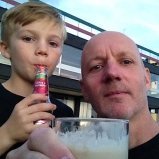
Revell/Hasegawa 1/72 Bae Harrier GR7 'Lucy'
SimonR posted a topic in Ready for Inspection - Aircraft
Hi all, Another recent completion is this 1/72 Revell (Hasegawa) Harrier GR7, 'Lucy' in Afghan 2009. Nice kit overall, went together well. The kit is lacking in stores so I raided the spares box and added some Paveway's and some good old fashioned bombs, not sure if this is a totally accurate payload for this aircraft but does make it look pretty mean! Now sitting here with a box of 5 1/72 harriers - what to do next! Anyway, heres some pics, tricky lighting conditions! cheers Simon PS: one day i'll build a Harrier where all the wheels actually touch the ground!! -
Revell has posted some new shots of their upcoming Tornado IDS. http://www.revell.de/service/galerie/tornado-ids.html Looks promising...
-
Hello everyone, I am new to the forum and this is my first post. http://www.flickr.com/photos/50794715@N03/11820301843/ Here are my first three proper builds, all 1/48. They are, from left to right: Seafire Mk.XV SR572/112 of 1832 NAS (RNVR)1949; HMS Hornbill /RNAS Culham. This was the Revell kit in BPF markings. I folded one of the wings, scratch building the wing fold sections, and added rockets and drop tank from the Airfix XVII and drilled out the exhaust stacks. I also dropped the flaps and used some spares from the Airfix kit. The decals were from Freightdog, except the stencils. I couldn't find any reference pictures for this aircraft so it's a flight of fancy, combining some stencils from the Kit and some from the Airfix XVII. Lightly weathered with a pastel wash and exhaust staining with ground pastels. I also added a whip aerial. I found this a difficult kit to build and used a lot of filler, for the first time. Seafire FR.47 VP480/180 of 800 NAS on HMS Triumph 1950 (Korean Stripes). The Airfix 1/48 kit, Built out of box apart from seat belts from wine bottle foil, drilled out exhaust stacks and a whip aerial. Weathered with a pastel wash, with ground pastel exhaust stains and some light paint chipping around the cannon access panels. Decals from Freightdog were used to fill the gaps in the kit set. A really enjoyable kit but the wing folds are very fiddly. Seafire Mk XVII Sp343/126 of (RNVR) NAS 1832 early1950's HMS Hornbill /RNAS Culham. Built out of box apart from tamiya tape seat belts, and a whip aerial. Again a light pastel panel wash. Whip aerial is wonky but will be corrected later. A really simple kit to build http://www.flickr.com/photos/50794715@N03/11820434404/ http://www.flickr.com/photos/50794715@N03/11820851996/ http://www.flickr.com/photos/50794715@N03/11820452573/ http://www.flickr.com/photos/50794715@N03/11820289253/ I hope the pictures appear ok, as I'm working from an iPad Comments welcomed. Don't hold back and thanks for looking Justin H
-
Revell's Airbus A319 built out of the box and using the twosix decals easyJet set. Thoroughly enjoyable build with superb decals, both those from twosix decals and those from Revell. G-EAZW selected as this aircraft brought Alison and I back from a wonderful week with one of our daughters in Sorento, Italy, flying from Naples to Liverpool. Here are a few pics. A319I by jonbru0903, on Flickr A319D by jonbru0903, on Flickr A319C by jonbru0903, on Flickr A319A by jonbru0903, on Flickr A319H by jonbru0903, on Flickr A319G by jonbru0903, on Flickr A319J by jonbru0903, on Flickr Take care.
-
Messerschmitt detail Sets Part 2 Brassin 1:32 With Eduard having produced a number of etched sets for the Revell 1:32 Me-109G6 it looks like their sister company are now getting more involved, other than just releasing wheel sets as reviewed HERE. The three new sets we have been kindly provided with here offer the modeller to add even more detail to the Revell kit and at the same time providing them with an alternative to other manufacturers. Cockpit Set (632022) Arriving in a top opening cardboard box, inside of which are a large number of parts, both resin and etched brass, surrounded by foam padding for complete protection. The larger than normal instruction sheet provides some of the clearest diagrams I’ve seen from Eduard/Brassin which will help greatly in getting the most out of this set. There are 25 resin parts in a mixture of medium and dark greys, plus two clear resin parts, two sheets of etched brass, one pre-painted and a small acetate sheet for the gun sight glass. The detail on the resin parts is nice and sharp, particularly on the side walls. The cockpit is made up of the cockpit floor including the lower section of the rear bulkhead, two side walls, front bulkhead, seat bucket, joystick, footrests, a choice of central cannon breach covers, upper rear bulkhead, two styles of gunsight mount, rudder pedal uprights and oxygen regulator. There is also a choice of two instrument panels, on for use with the etched parts and one on which you could use instrument dial decals, such as those from Airscale. The resin details are enhanced with the addition of the etched parts, and these include the trim wheels along with the chain drives, gunsight glass mounts, rudder pedals with foot straps, joystick enhancements, various rods and brackets for both side panels, as well as the canopy opening mechanism on the starboard panel. The pre-painted seat belts are quite complex, but with care and attention will build into a pretty amazing representation of the real things. Also on the painted sheet are the various layers that go to make up the detailed instrument panel. The plain etched sheet also provides optional panels for use on either the early or late versions of the G6. Even the canopy receives addition detail in the form of the armoured glass, (clear resin), and internal structure for the opening section, not to mention the support strut to keep this section open, plus vents and grab handles on the windscreen section. Undercarriage Legs (632 021) This set is part of Brassins increasing range of undercarriage legs produced in bronze. Not only is the detail really very good, but using this material means the legs won’t begin to buckle, particularly under the weight of all the resin and etch that is now on offer for the kit. They have been designed to fit into the kit undercarriage recesses, so no further modification is required. The set also includes a pair of new undercarriage doors made out of resin. The doors are only lightly affixed to the casting blocks, so cleaning up after removal should be a doddle. Exhaust set (632 020) This isn’t quite as simple a set as it first looks. Whilst the rows of exhaust stubs are moulded in one piece and are a simple slot in replacement for the kit parts, before the etched parts can be used the kit needs to be modified. The upper and lower vanes need to be carefully cut away from the fairings and also a small section of the fairing lip on the fuselage parts. The etched vanes can then be glued into position, followed by the resin exhaust. Conclusion Just when you thought that there couldn’t be anything else to be added to the Revel Me109, Brassin come along and blow that thought away with these sets. The cockpit set is wonderful and will really stand out with some careful detail painting and weathering, the exhaust set is very nice and will add some finesse to the nose are, but it’s the bronze undercarriage legs that really do it for me as they are not only strong, but look great. They probably won’t be cheap, but when you’ve put so much effort in building your ultimate Me109, it deserves to be standing on these superb legs, particularly when matched with the corresponding Brassin wheels. Review sample courtesy of
-
Hello and welcome to build number 7 since getting back on the modeling horse. When I get a dozen done I'll stop counting. Sadly, at the rate I'm going it's that's not happening until the end of 2015! So what do we have here and why? After build 6, which was a satisfyingly dirty ARTF 'pink' Op Granby Jaguar GR1 in 1/72nd, (go see if you haven't. Shameless plug. : http://www.britmodeller.com/forums/index.php?/topic/234953776-172-italeri-jaguar-gr1-op-granby-build-no6-and-counting/#entry1519222), I decided to do a shinier, cleaner and more colourful build, which would also hopefully be a reasonably rapid one as well. So off to the stash to collect an F89 Scorpion my girlfriend bought for me from the Newcastle Modelzone when they were closing down. I had never seen the F89 before until I spotted the Revell kit. I thought it was a most interesting looking aircraft and decided to check out its history, including the failed intercept by a pair of F89Ds of an F6F-5K unmanned target drone on August 16 1956. They did apparently start a few raging bush fires and shred the front of someone's car with the unguided rockets they fired. Accurate they are not. So.. Here it is. Totally OOB and built over a period of about 4 weeks which is super speedy for me. Alclad Aluminium for most of the metallic. A mix of Humbrol Trainer Yellow 24 and Scarlet 60 in approximate 50/50% 60/40% mixes for the red. Weathering? Just a little. Nice, easy, pleasant build of an interesting aircraft. Thank you for your attention. F89_130214_01 by IrritableRabbit, on Flickr F89_130214_02 by IrritableRabbit, on Flickr F89_130214_03 by IrritableRabbit, on Flickr F89_130214_05 by IrritableRabbit, on Flickr F89_130214_07 by IrritableRabbit, on Flickr F89_130214_08 by IrritableRabbit, on Flickr F89_130214_10 by IrritableRabbit, on Flickr F89_130214_11 by IrritableRabbit, on Flickr
- 41 replies
-
- 19
-






